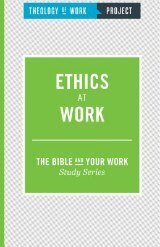Only in an Advisory Capacity
Blog / Produced by The High Calling
Somewhere around seventh grade, my boy scout troop was gearing up for the annual pinewood derby race: a contest where scouts whittle down a small rectangular block of pine into polished cars that race against each other. Of course, we all knew what happened during the annual pinewood derby race—the same thing that happened during the annual school science fair—it was my parent versus other kids’ parents! While we stood around wiping our noses, our Silicon Valley parents fashioned incredible gizmos and experiments or, in the case of the derby, slick cars that hummed down the racetrack nearly friction-free.
Everyone knew that the Cladis boy would be a contender in the upcoming pinewood derby race. Wasn’t I just coming off a high of standing in the winners’ circle of the Northern California Science Fair with my entry of a working Wilson Cloud Chamber? (A device that made it possible to see bright tracks made by naturally occurring nuclear particles, e.g., gamma rays.) Of course, I devised the entire experiment myself (yeah, right). Did I mention my father is a nuclear physicist?
When the time came to begin work on the pinewood cars, my father was gleeful. I knew that look in his eyes: the gleam of working with a raw hunk of anything to solve a problem using mathematical calculations and the laws of physics. Our house was a veritable laboratory of projects from new and improved dad-improvised vacuum cleaners to hair dryers that worked without heat. He drafted the pinewood car design on paper to show how wind would flow over its sleek design and indicated where he would pour molten lead into the car’s base near the front (“low center of gravity near the front axel for best forward acceleration”). He wrote down the name of a state-of-the-art substance to put on the axels to reduce friction.
That’s when I got bold.
“Um, Dad?”
“Yes, son.” He studied the paper like a hungry man with a menu.
“This time, Dad, I want to do it myself.”
He stopped. Glasses went down on the paper (a sign of something important about to happen) and looked at me.
“OK, George,” he said, but like a man giving up fried chicken for Lent.
“I need your advice. But I want to make it myself this time.”
“OK,” he repeated. Then like a man trying to convince himself, “Sure.”
Dad did advise me that year and my car finished respectably among the top ten. The winning car was made by one of my best friend’s father, a jet aircraft engineer.
Much later, it dawned on me that a mentor leads first by example, then by coming alongside, and finally by stepping aside.
Everyone knew that the Cladis boy would be a contender in the upcoming pinewood derby race. Wasn’t I just coming off a high of standing in the winners’ circle of the Northern California Science Fair with my entry of a working Wilson Cloud Chamber? (A device that made it possible to see bright tracks made by naturally occurring nuclear particles, e.g., gamma rays.) Of course, I devised the entire experiment myself (yeah, right). Did I mention my father is a nuclear physicist?
When the time came to begin work on the pinewood cars, my father was gleeful. I knew that look in his eyes: the gleam of working with a raw hunk of anything to solve a problem using mathematical calculations and the laws of physics. Our house was a veritable laboratory of projects from new and improved dad-improvised vacuum cleaners to hair dryers that worked without heat. He drafted the pinewood car design on paper to show how wind would flow over its sleek design and indicated where he would pour molten lead into the car’s base near the front (“low center of gravity near the front axel for best forward acceleration”). He wrote down the name of a state-of-the-art substance to put on the axels to reduce friction.
That’s when I got bold.
“Um, Dad?”
“Yes, son.” He studied the paper like a hungry man with a menu.
“This time, Dad, I want to do it myself.”
He stopped. Glasses went down on the paper (a sign of something important about to happen) and looked at me.
“OK, George,” he said, but like a man giving up fried chicken for Lent.
“I need your advice. But I want to make it myself this time.”
“OK,” he repeated. Then like a man trying to convince himself, “Sure.”
Dad did advise me that year and my car finished respectably among the top ten. The winning car was made by one of my best friend’s father, a jet aircraft engineer.
Much later, it dawned on me that a mentor leads first by example, then by coming alongside, and finally by stepping aside.





